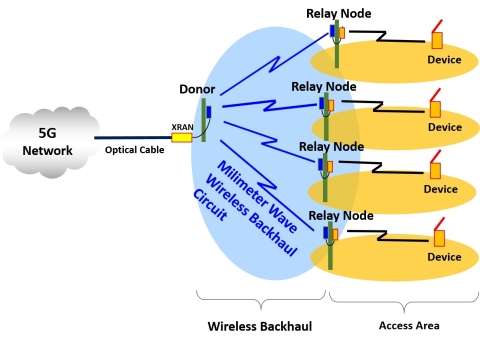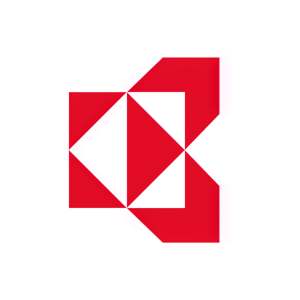Kyocera and JMA Wireless Sign Contract for 5G Millimeter-Wave Backhaul System Development

Conceptual Diagram of 5G Millimeter-Wave Backhaul System (Graphic: Business Wire)
The 5G millimeter-wave backhaul system will connect donor stations and relay node stations for quick and effective deployment of 5G base stations in areas where fiber is either not available or too costly. The system will use O-RAN interfaces *1, making it possible to connect to various 5G networks.
Development Background
5G services are in full swing, and there is the need to quickly densify 5G service areas. Normally, 5G base stations are connected to the 5G core network via fiber optic cables, but in rural areas and suburban areas it is expected that fiber trenching on the last mile will be expensive and time-consuming to realize. Therefore, Kyocera and JMA’s system will use multi-beam technology *2 with Kyocera’s multi-element antennas for donor stations to develop a multi-cell system that simultaneously connects multiple relay node stations with 5G millimeter-wave wireless backhaul circuits. The resulting solution will simplify the installation, integration and operation of 5G base stations, contributing to a rapid growth of 5G radio sites.
In addition, SoftBank Corp. (“SoftBank”)'s knowledge on network quality and fiber transport requirements, will contribute to the development of products that meet customer needs in
By combining Kyocera's long track record in wireless base station technology development with JMA’s innovative virtualized baseband technology *3 (XRAN), Kyocera aims for an early market launch for the 5G backhaul system.
*1 O-RAN (Open Radio Access Network) interface is the connection interface between 5G devices
The common architecture specification defined by the
*2 Multi-beamforming is a technology that uses beamforming technology to strengthen radio waves in a specific direction and beam form a plurality of radio waves simultaneously from a multi-element antenna and direct them toward each other.
*3 Technology to realize radio signal processing of base stations by software without using dedicated equipment.
System Features
• Reduces installation time and cost
Enables wireless last one mile for 5G connection, thus reducing the time and cost of base station installation to help quickly and inexpensively establish 5G coverage.
• Compact size, lightweight, and low power consumption
Leveraging Kyocera decades of experience in base station technology development, we aim to save space, simplify installation, and reduce the power consumption required for the system.
• Virtualized baseband technology (XRAN)
Multi-simultaneous connections between donor and relay node stations are realized by combining radio control with Kyocera’s multi-beamforming technology and JMA’s virtualization baseband technology. JMA’s virtualization baseband technology is also used for the relay node stations, enabling flexible system extension that helps to reduce operating costs.
Roles of |
|
Company |
Role |
Kyocera |
Development of system and radio equipment |
JMA |
Development of XRAN |
Future Development Plans
Kyocera and JMA have discussed with SoftBank the development of this technology and are considering support for field trials on a commercial aircraft using SoftBank's network. We plan to launch this system in the fiscal year 2022.
Comments from Participating Companies
"We are pleased to announce that Kyocera has reached an agreement with JMA to jointly develop a new telecommunications infrastructure system business. Kyocera intends to contribute to the development of 5G infrastructure systems providing our revolutionary 5G millimeter-wave backhaul system to SoftBank and various other carriers."
"JMA is looking forward to working with Kyocera to bring this revolutionary 5G millimeter-wave backhaul system to carriers like SoftBank in the near future."
"SoftBank welcomes the agreement between Kyocera and JMA to develop a new solution for 5G deployment through the O-RAN interface."
About JMA
A disruptive force in the wireless industry, JMA is restoring
View source version on businesswire.com: https://www.businesswire.com/news/home/20211102005485/en/
CONTACT:
TEL: Head Office +81-(0)75-604-3416 / E-mail: webmaster.pressgl@kyocera.jp
Source:








